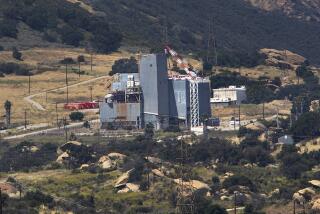Rust Threatens Historic Ship
This old warship was at the surrender of the German fleet during World War I and withstood torpedoes at Omaha Beach in France on D-Day. Long moored in a berth at the Houston Ship Channel, the Battleship Texas is now a floating tourist attraction, and a badly leaking one at that.
Time and corrosive saltwater are slowly destroying the vessel once called the world’s most powerful weapon, and cash-strapped conservators are scrambling to secure funding for an overhaul before it’s too late.
“It’s been rusting for 90 years,” ship curator Barry Ward said. “It isn’t going to fall apart tomorrow, but the longer you avoid a major repair, the harder it will be to repair the damage that’s already been done.”
A proposal to use $16 million in federal highway funds for ship repairs passed through a conference committee of the state Legislature this month. If lawmakers vote to approve the funds, the Texas Parks and Wildlife Department, which maintains the vessel, will start work on a dry dock that could feature a cradle capable of lifting the 34,000-ton ship out of the water permanently.
“However [the dock] is designed, this ship is part of our cultural history and it deserves to be saved,” said Steve Whiston, director of the parks department’s infrastructure division. “There’s not another one like it left.”
The Texas, commissioned in 1914, is the last surviving dreadnought battleship -- a ship design that features large weapons of the same caliber, allowing for more concentrated blasts of fire. It is the only remaining U.S. battleship to survive two world wars, and is a microcosm of the technology of the era, Ward said.
“Her career spans the earliest days of flight through the nuclear age,” he said.
Decommissioned in 1948, the ship was brought here by “Texans who couldn’t stand the thought of a warship with the name ‘Texas’ on it being sunk as fodder during nuclear testing,” Ward said.
It was docked south of Houston at the San Jacinto Battleground State Historic Site, the location of an 1836 battle that led to Texas’ independence from Mexico.
As a result, numbers of confused children have asked whether Sam Houston fought Gen. Antonio Lopez de Santa Anna from the bow of a battleship. “We inherited the location,” Ward said. “We don’t do public monuments that way anymore. It’s up to educators to teach students that the ship wasn’t at the battle of San Jacinto. Otherwise it’s just a jungle gym to them.”
It’s unlikely the Texas will be moved elsewhere, in part because conservators are unsure whether the fragile ship can withstand a sea voyage. “It’s risky because of the stress of the tow, the cross currents and the waves,” Ward said.
The ship was last towed to a dry dock in 1988 for a $12-million renovation of the hull -- the first in 40 years. State lawmakers later approved an additional $12 million in bonds for ship maintenance but did not provide the money to issue the bonds. Ward hopes the federal highway money tentatively approved this month will lead to badly needed repairs.
The hull should be repaired every 10 or so years for damage caused by water, Ward said. “It’s like changing the oil in your car -- it’s something that should be done regularly. But I would advocate getting her out of the water permanently so the state of Texas would never have to pay for that kind of cyclical repair again. We’re going for a cure, not a Band-Aid.”
Floating next to refineries and oil storage tanks, the 573-foot dark blue battleship looks startlingly out of place, but it is a popular field trip destination. Last week, a busload of seventh-graders climbed aboard and quickly scattered into nooks and crannies.
“I love ships,” said Ariel Barron, 13. “You can read about them in a book, but it’s better to see with your own eyes how things used to be.”
Cheyenne Dutton said he was on his third field trip to the battleship. Each time he visits, he said, “something else is closed off. I wish they’d fix everything so we can see all of it.”
Cheyenne nimbly climbed a ladder and stopped in front of a locked door. “See, we can’t go in there,” he said. “I think it stinks.”
More to Read
Start your day right
Sign up for Essential California for news, features and recommendations from the L.A. Times and beyond in your inbox six days a week.
You may occasionally receive promotional content from the Los Angeles Times.






